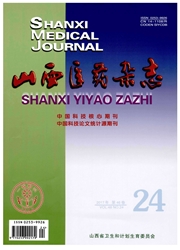

 中文摘要:
中文摘要:
目的 通过探讨α1-微球蛋白与急性肾损伤程度的评估的相关性临床价值,拟验证血α1-微球蛋白用于临床急性肾损伤患者程度的评价。方法 选择2015年7月~2016年6月在我院门诊和住院确诊为急性肾损伤患者73例,设为观察组(按照患者病情不同分为一期48例,二期组11例,三期组14例)。另选择同期在该院进行健康体检者70例设为对照组。所有受试者均进行α1微球蛋白(α-Microglobulin,简称α1-MG)检测,同时检测诊断早期肾损伤指标胱抑素C(cystatin c,简称Cys-C)水平,并对结果进行分析。结果 α1-MG各期组检验结果:一期组(26.2±7.94)mg,二期组(34.25±14.28)mg,三期组(72.58±36.9)mg,对照组(21.46±5.93)mg。随着病情加重,α1-MG水平也逐步升高,观察者与对照组、观察组组间比较,显示差异均有统计学意义(P〈0.05);α1-MG的阳性率:一期组12例(25%),二期组8例(72.73%),三期组13例(92.86%),和同期组Cys-C的阳性率比较,差异均显示无统计学意义(P〉0.05)。结论 α1-微球蛋白是辅助诊断急性肾损伤的良好指标,可参与评估急性肾损伤程度。
 英文摘要:
英文摘要:
Objective: To investigate the clinical value of α1-MG for AKI assessment. Methods: 73 cases of patients with AKI were divided into first-stage group, second-stage-group and third-stage group according to their illness. In addition, there was a healthy control group including 70 cases individuals, α1-MG, Cys-C, Cr, Bun of allcases were measured, compared and analyzed. Rsults: The results of α1-MG in each stage: stage 1 group (26.2±7.94) mg, stage 2 group (34.25 ±14.28) mg, stage 3 group (72.58 ± 36.9) mg, control group (21.46±21.46) mg. As the illness grew worse, α1-MG increased gradually, differences between observation group and control group were statistically significant (P〈0.05). The positive rate of α1-MG: stage 1 group 12 (25%), stage 2 group 8 (72.73%), stage 3 group 13 (92.86%), compared with the positive rate of the same set of Cys-C, the differences had no statistical significance (P 〉 0.05). Conclusion:α1-MG is a good indicator for secsecondary diagnosis of AKI, can be used in the assessment of AKI degree.
 同期刊论文项目
同期刊论文项目
 同项目期刊论文
同项目期刊论文
 期刊信息
期刊信息
